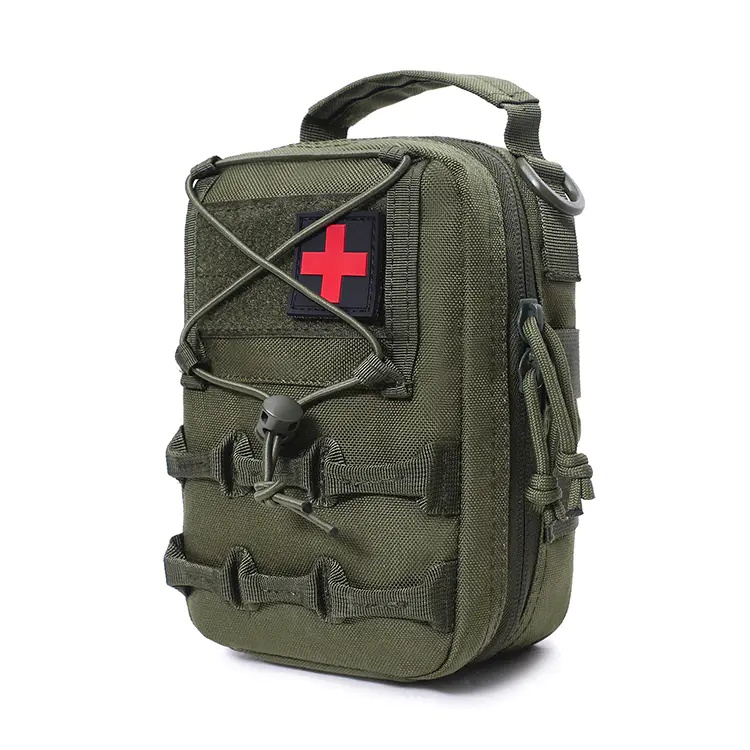In critical missions or remote deployments, a Combat Military First Aid Kit can mean the difference between life and death. Designed to handle high-risk injuries in unpredictable environments, this type of kit is essential for soldiers, field medics, and tactical operators. Choosing the right kit for field use requires careful attention to its purpose, components, portability, and the unique conditions of the operating environment. This article offers a practical guide to selecting a reliable combat medical kit that delivers under pressure.

The first step in choosing a military-grade first aid kit is identifying the environment in which it will be used. Are you operating in hot deserts, mountainous terrain, dense forests, or cold climates? Each setting demands specific considerations. For example, cold climates may require thermal blankets and cold-resistant packaging, while humid environments call for moisture-proof and mildew-resistant materials. Additionally, the likelihood of sustaining different types of injuries—such as burns, deep lacerations, fractures, or gunshot wounds—should influence what medical supplies are prioritized.
A well-equipped combat kit should include a balance of trauma management tools and basic survival items. Key essentials often include tourniquets, hemostatic agents, compression bandages, airway devices, and chest seals. These are critical for addressing life-threatening injuries before professional medical assistance is available. However, it's equally important that these items are military-tested, sterile, and compactly organized. An efficient layout saves time, reduces stress, and ensures that critical tools can be accessed with one hand if necessary.
Durability and portability are also non-negotiable in the field. The kit container must be made from rugged, weather-resistant materials, such as reinforced nylon or waterproof PVC. Look for features like MOLLE-compatible straps, quick-access compartments, and zippered pouches. These allow for secure attachment to a vest or backpack, while also enabling fast retrieval during emergencies. A kit that's too bulky, poorly organized, or easily damaged defeats the purpose of mobility in hostile conditions.
Another important factor is customization. Different units and roles require different medical tools. A frontline soldier may need hemorrhage control supplies and burn treatments, while a team leader may carry splints, pain relief, and additional diagnostics. Look for kits that allow modular upgrades or user-defined configurations, so you can adapt your setup without compromising performance. Some kits even include color-coded packaging for quick identification in low-light conditions, which is highly valuable during night operations.
Training should not be overlooked. Even the most advanced combat medical kit is ineffective without the proper knowledge to use it. When selecting a kit, consider whether it comes with an instruction manual, training cards, or online learning resources. Some suppliers include tactical medical guides or QR-code-accessible training videos, which are crucial for reinforcing life-saving procedures in high-stress scenarios.
For units preparing for international deployment, it's also vital to check if the kit contents comply with relevant medical standards and military protocols. Compliance ensures compatibility with allied forces, simplifies resupply chains, and supports medical documentation. NATO-style itemization or DIN-compliant kits (such as DIN13164) are often preferred for consistency and reliability.
To help evaluate and compare options more effectively, the table below summarizes the key decision factors:
| Consideration | Description |
| Environment | Hot, cold, wet, desert, forest, or urban—affects item durability and content |
| Injury Type | Gunshot wounds, burns, fractures, etc.—determine necessary medical tools |
| Essential Contents | Tourniquets, bandages, airway tools, hemostatic agents, chest seals |
| Portability & Access | MOLLE compatibility, fast-access compartments, compact layout |
| Material Durability | Waterproof, impact-resistant, UV-resistant materials |
| Customizability | Modular design, color-coded packaging, add-on compatibility |
| Training Support | Guides, tutorials, or visual instructions included |
| Standards Compliance | NATO, ISO, or DIN-standard components |
Ultimately, selecting the best combat medical kit is about matching the product to your mission's reality. Avoid generic or civilian-grade kits, which may lack the resilience and scope required in tactical settings. Always assess your operational goals, unit composition, and mission duration before making a decision.
Tailored for Every ScenarioAt Yonoel First Aid, we understand that every mission is unique. That's why we offer extensive customization options and a wide range of materials to ensure your first aid kit meets the exact demands of your operating environment. |
|
If you're looking for a field-tested solution from a manufacturer with deep experience in tactical medical supplies, Yonoel offers a wide range of professionally designed kits. Our kits are built for military, law enforcement, and outdoor professionals who demand uncompromising reliability. From rugged packaging to mission-specific modules, every aspect is engineered to meet the highest performance standards in the harshest environments.